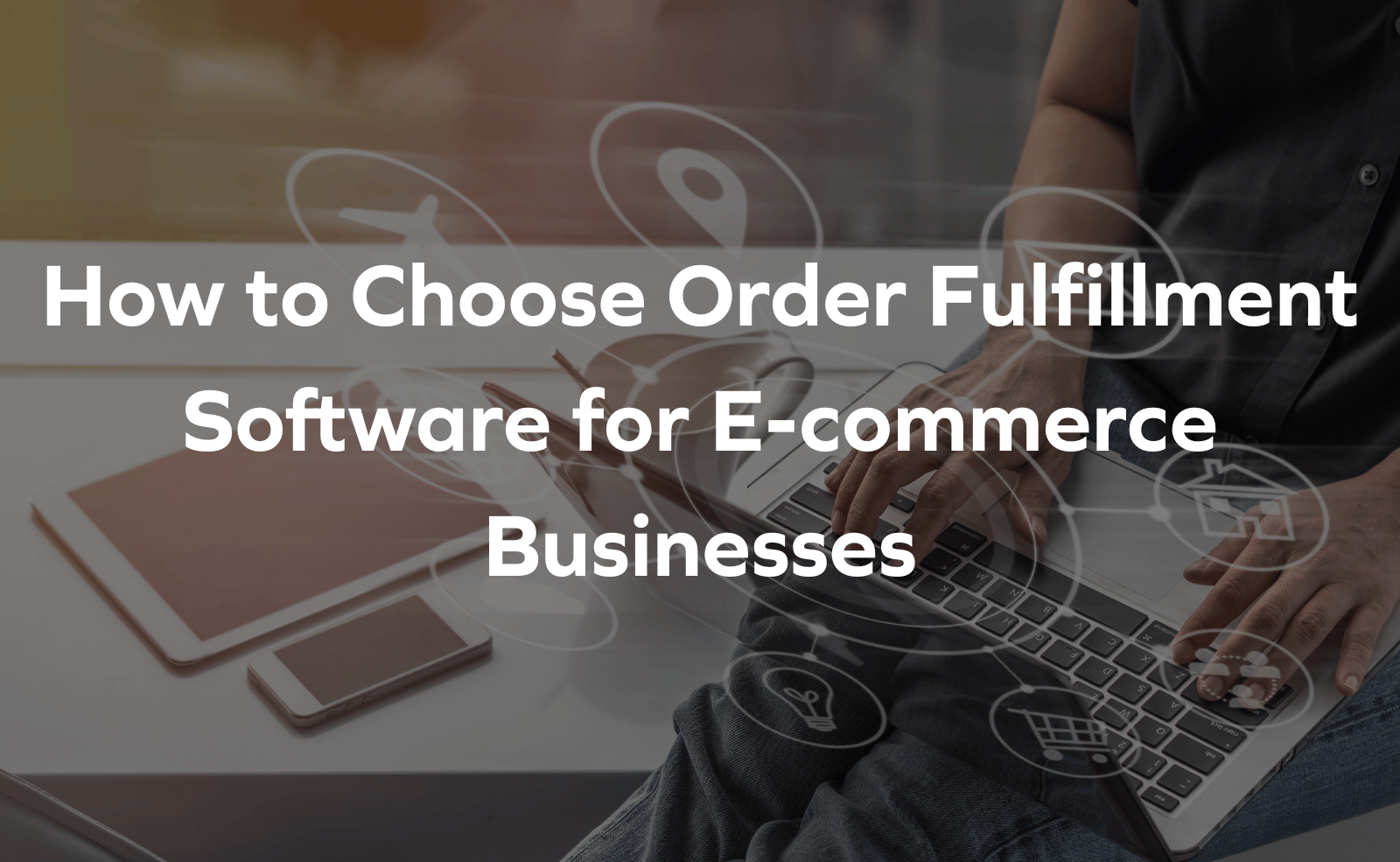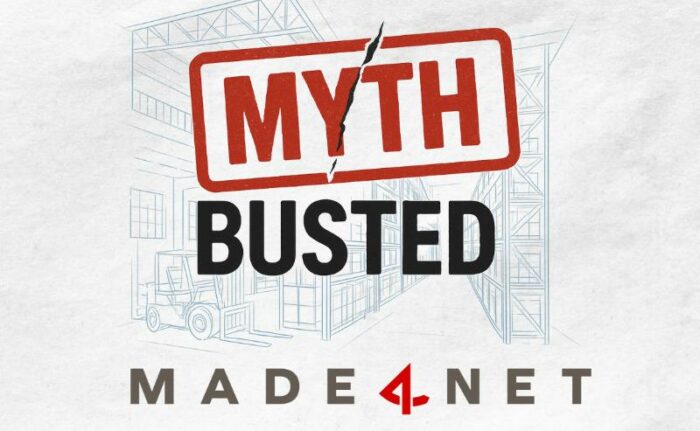
When it comes to choosing e-commerce order fulfillment software for your warehouse, there’s a lot to weigh. Selecting the wrong system can lead to significant operational headaches, while waiting too long to upgrade can result in missed revenue opportunities and mounting inefficiencies as you struggle with an outdated solution. The right order fulfillment or omnichannel fulfillment software should offer the features your operation needs, come from a trusted vendor, and align with your business goals to support your long-term success.
In this article, we’ll cover:
- What is e-commerce order fulfillment software?
- Common order fulfillment challenges for e-commerce businesses
- Key features to look for in e-commerce order fulfillment software
- Benefits of e-commerce order fulfillment software
What is E-commerce Order Fulfillment Software?
E-commerce order fulfillment software is a type of technology that helps businesses manage the entire process of getting a customer’s order from purchase to delivery. It typically covers everything from order receipt and inventory management to picking, packing, shipping, delivery and sometimes even handling returns.
E-commerce order fulfillment has a unique set of needs. An e-commerce facility or omnichannel facility would need to be laid out and optimized for managing high volumes of smaller orders, picking and shipping “eaches” or a small number of SKUs, have a large shipping area for boxing, packaging and labeling, and integrate with parcel carriers. E-commerce facilities need to be optimized with powerful pick and pack software for quick order assembly, value added services, staging parcel carrier pickup, etc.
Order fulfillment software can be customized to power a wide-range of operations effectively and efficiently. If you’re looking for effective order fulfillment software, make sure to consider these potential challenges, important features, and best practices.
Common Order Fulfillment Challenges for E-commerce Businesses
Order fulfillment software serves as the backbone of operational success, yet its implementation is far from uniform. Tailoring e-commerce order fulfillment software to the unique complexity and business requirements of each operation is crucial. Potential challenges include:
E-commerce Order Fulfillment Software Challenge #1: Inventory Management Complexity
Vikas Aron, Chief Product Officer at Bricz says, “Brands must plan, allocate and sell across retail, wholesale, and digital channels. They are looking to stock inventory across different channels in a single location to improve inventory efficiency and margins amidst demand and distribution volatility. However, with very different order profiles, service level agreements, picking and packing processes, the benefits of keeping inventory together can often result in higher operating costs. Managing this balance between operating costs and inventory efficiency is one of the top challenges omnichannel retailers face.”
E-commerce Order Fulfillment Software Challenge #2: Space Utilization and Warehouse Optimization
James Goldman, CEO, and Managing Partner at JGA believes warehouse optimization and space utilization is a challenge for companies implementing order fulfillment. “With multiple channels, the warehouse’s layout needs to be optimized, and the picking and packing process needs to be streamlined to ensure timely and accurate order fulfillment. The challenge also arises in managing inventory storage and handling procedures to keep the inventory safe and secure.”
E-commerce Order Fulfillment Software Challenge #3: Picking Complexity and Labor Shortages
Steve Hopper, Founder and Principal at Inviscid Consulting states that as a wider variety of order types becomes normal, the need to handle multiple units of measure (UOM) can complicate things. “Since omnichannel warehouses are shipping ‘ones and tons’ concurrently, the same SKU is often available at multiple UOMs. These might include a full pallet load, a full case, an inner pack, and/or an each. And the most efficient way to pick and ship orders typically involves picking the same SKU at all UOMs, depending on the quantity.”
This in turn leads to increased picking complexities, as Jason Gryszkowiec, Senior Managing Director at St. Onge cautions. “Increases in e-commerce volume and more frequent smaller deliveries to service store replenishment drive up break case volume, increasing picking complexity and labor needs while creating new order pack and finishing task requirements. Plus, increasing SKUs stresses resources within the facility as they expand to service multiple challenges.”
E-commerce Order Fulfillment Software Challenge #4: Staffing Challenges and Fluctuating Demand
Staffing challenges are common in regards to order fulfillment. Steve Pullo, President at Blue Label Systems, shares that “scaling the workforce during peak periods is a serious challenge” in omnichannel environments. This is because some retail businesses can go from shipping 5k orders a day to 50k orders a day almost overnight once peak season hits.
In addition, many warehouse teams are struggling to understand how to manage warehouse employees for optimized productivity, resulting in burnt out associates, high turnover, and inefficient labor.
Key Features to Look For in E-commerce Order Fulfillment Software
The experts unanimously agree that robust order fulfillment software tailored to the unique requirements of omnichannel operations is essential to overcoming these challenges. This modern solution not only enhances operational efficiency but also improves customer satisfaction by delivering seamless shopping experiences.
When looking for the right order fulfillment software, our experts indicate the following six features are critical.
E-commerce Order Fulfillment Software Feature #1: Order management
You want a WMS that allows you to intelligently aggregate multiple orders, allowing you to organize all orders that need to be shipped into smart buckets or work that are combined according to a variety of characteristics.
E-commerce Order Fulfillment Software Feature #2: Value-added Service (VAS)
VAS provides brands and their 3PL partners with a suite of services that will improve the consumer experience while growing revenue, like inserting a coupon or free gift into a shipment or providing customized wrapping and light assembly.
E-commerce Order Fulfillment Software Feature #3: Returns Processing
It’s inevitable, a portion of goods purchased online will need to be returned, which means having a simplified returns process is essential. Retail brands need to be able to provide customers with a replacement, credit, or refund, and deal with the physical goods, be it to restock and resell, or properly dispose of.
E-commerce Order Fulfillment Software Feature #4: Scalability
Whether you need to expand into a new facility or add new business lines, you want a solution that accommodates that from a commercial standpoint without adding complexities down the line.
E-commerce Order Fulfillment Software Feature #5: Reliable integrations
You want an omnichannel and e-commerce WMS that can create and publish endpoints that are easy to interpret, allowing you to seamlessly integrate data directly in and out of your system. A standard approach that works across a range of customers is key.
Benefits of E-commerce Order Fulfillment Software
Implementing order fulfillment software has a direct, positive impact on a business’s operations, profitability, and reputation. After all, no one has ever complained about a business being “too organized” and that is exactly what fulfillment software offers: a roadmap to organization, allowing businesses to plan for all potential contingencies to safeguard their operational efficiency and strengthen their supply chain. So, what benefits can one expect after investing in order fulfillment software?
E-commerce Order Fulfillment Software Benefit #1: Improved Inventory Accuracy
With this software, unlock precise tracking to reduce errors in stock levels. Plus, gain real-time inventory visibility to help minimize overstocking or stockouts and ensure inventory is available to fulfill orders.
E-commerce Order Fulfillment Software Benefit #2: Enhanced Order Fulfillment
Speed up order turnaround due to accelerated picking, packing, and shipping processes. And, reduce errors in order fulfillment, leading to higher customer satisfaction.
E-commerce Order Fulfillment Software Benefit #3: Better Space Utilization
Implement smart layouts and improved slotting strategies to help operations maximize storage capacity. Reduce unnecessary movement within the warehouse to allow for improved workflows.
E-commerce Order Fulfillment Software Benefit #4: Cost Savings
Optimize labor and resource use to lower operational costs. Reduce losses from damaged or misplaced goods. Improve space utilization, delaying or avoiding the need for warehouse expansion.
E-commerce Order Fulfillment Software Benefit #5: Increased Operational Efficiency
Enterprise technology, like a WMS, streamlines e-commerce operations. Automation helps to reduce manual work and human error.
E-commerce Order Fulfillment Software Benefit #6: Stronger Supplier and Partner Relationships
Accurate and timely data exchange helps to facilitate smoother communication and transactions with vendors and partners. Ensure on-time order processing, strengthening trust and reliability.
E-commerce Order Fulfillment Software Benefit #7: Improved Decision-Making
Detailed reporting and analytics provide better insights into performance metrics. Enable proactive adjustments to demand fluctuations and supply chain disruptions.
E-commerce Order Fulfillment Software Benefit #8: Higher Customer Satisfaction
Elevate brand reputation with accurate and on-time deliveries. Offer better tracking and transparency, enhancing the customer experience.
E-commerce Order Fulfillment Software Benefit #9: Scalability and Adaptability
Support business growth with flexible systems and processes that can scale with demand. Adapt quickly to market changes or supply chain challenges.
E-commerce Order Fulfillment Software Benefit #10: Compliance and Safety
Different technologies, like e-commerce order fulfillment software, help ensure businesses adhere to industry regulations and standards, reducing legal risks. Promote a safe working environment, decreasing the likelihood of workplace accidents.
One thing is for certain, order fulfillment software is an excellent step toward improved efficiency, transparent supply chain processes, and minimized risk. To find out which fulfillment software is best for your needs, simply reach out.


